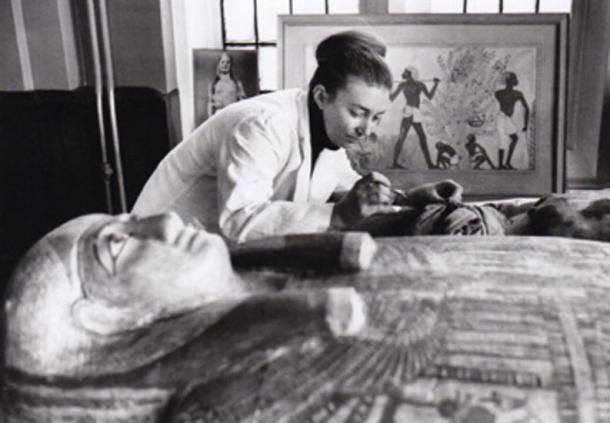The Curious Case of Egypt's Cocaine Mummies
How did cocaine and nicotine end up in royal Egyptian mummies?

In 1992, renowned forensic toxicologist Svetlana Balabanova shocked the world by declaring she found cocaine and nicotine in Egyptian mummies.
The results surprised everyone because we believed that tobacco and cocaine were available only in the Americas and arrived in the Old World after the age of discovery in the late 15th century.
The mummies, dubbed the cocaine mummies, caused a stir in the world of history and archaeology. Many were eager to point out a previously unknown trade link between Egypt and the Americas.
Is it possible that Egypt traded with the indigenous people of South America to buy cocaine and tobacco?
Or is there another explanation for narcotics in Egyptian mummies?
The forensic analysis
Cocaine is an alkaloid obtained from the plant Erythroxylum coca, which is native to South America. Since the dawn of time, residents of ancient Peru have chewed coca leaves as a stimulant and appetite suppressant, a practice that can still be found in the region.
Our body can process cocaine from coca leaves naturally, giving the consumers a “high” and allowing them to perform hard labor for long durations. The Incas conquered much of Peru, trying to control the coca trade. They were also aware of coca’s anesthetic properties.
Spanish conquistadors noticed the stimulatory effects of coca leaves on the Indigenous people and tried to stop their consumption. Later, when the workers' productivity fell, the Spanish decided a better solution would be to allow the natives to continue their tradition but impose a tax on the coca.
We don’t find coca leaves outside South America in the ancient world.
So, how did they end up in Egyptian Mummies?
Dr. Balbanova and her team looked at hair from seven Egyptian adult mummified heads, one complete adult female and one incomplete adult male, dating between 1070 BC and 395 BC.
The researchers found traces of cocaine, nicotine, and hashish in the mummies. They followed this study a year later with analyses of mummies from Egypt across different eras and samples from Peru, Sudan, and the Bell Beaker culture of Europe.
Balbanova and her team performed tests using GC/MS (gas chromatography/ mass spectrometry) and radioimmunoassay. Both methods are standard procedures for detecting cocaine, nicotine, and THC (cannabis) and are used widely in drug tests.
The level of cocaine in the Egyptian mummies was found to be (24–200) ng/g, whereas the nicotine levels were found to be (140–900) ng/g. To put these numbers in context, the cut-off for a positive result for cocaine in hair samples is 0.5 ng/mg (as per the European Workplace Drug Testing Society), which is 500 ng/g.
As you can see, the levels of cocaine in the mummies tested by Balabanova wouldn’t meet the criteria for a positive cocaine test. But it is still worth exploring the presence of cocaine in the mummies.
Let us compare the values of different mummies tested by Dr. Balbanova’s team in 1993.
If you look at the table, you will find there is a significant difference in the cocaine levels between the Peruvian mummies and the Egyptian mummies.
This is a red flag.
If the Egyptians consumed cocaine, shouldn’t the values be comparable?
Or, if you want to give the Egyptians the benefit of the doubt that they probably took cocaine in smaller quantities, our next question is, where did they get them from?
Did they trade with the Americas?
Let us examine the evidence.
Keep reading with a 7-day free trial
Subscribe to Forgotten Footprints to keep reading this post and get 7 days of free access to the full post archives.



